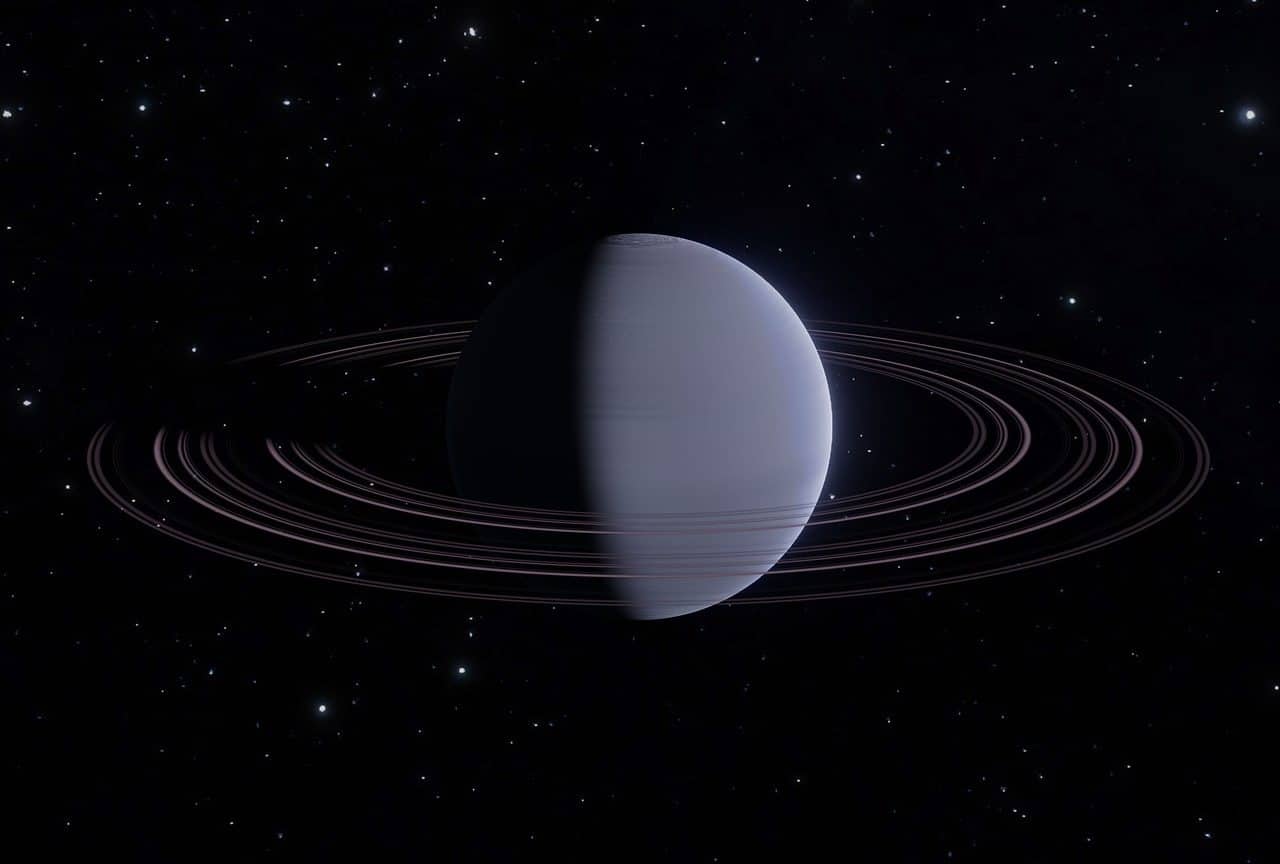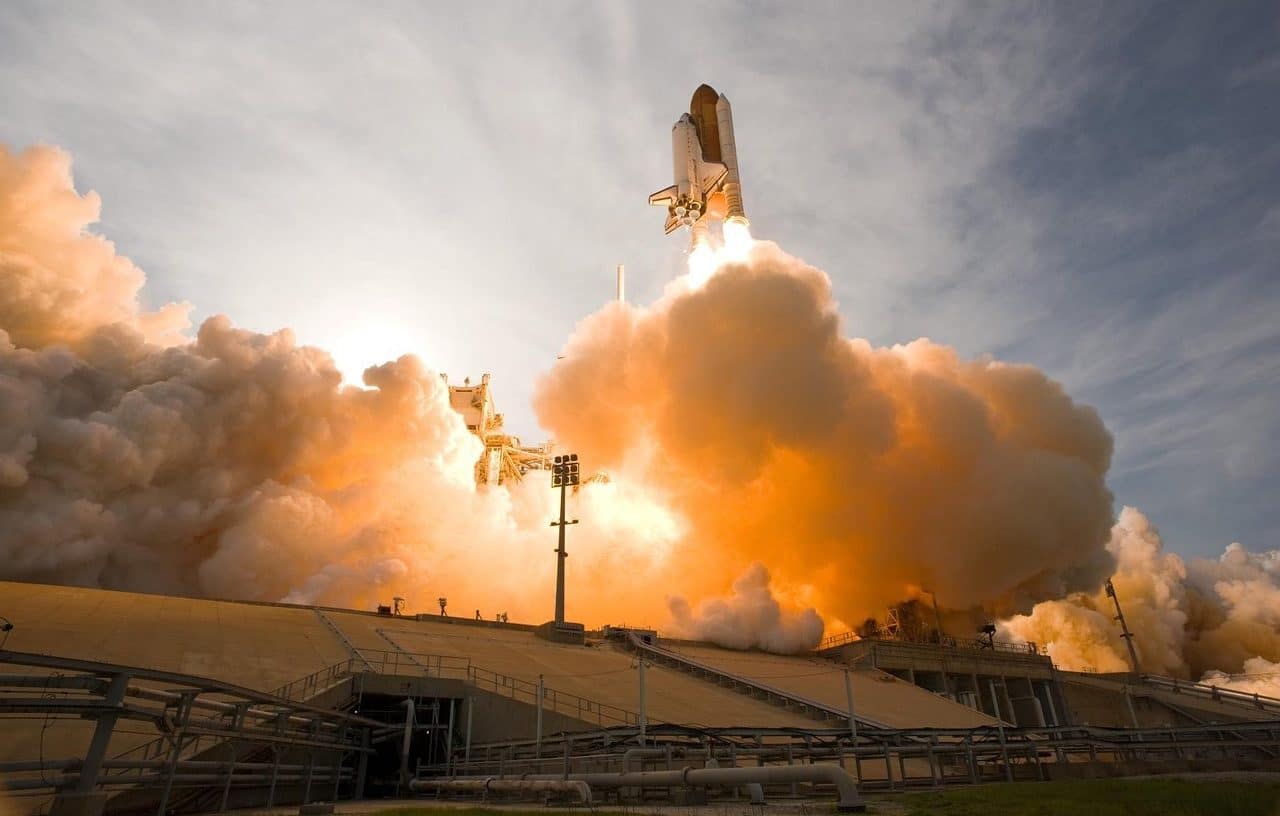
Uranus is the seventh planet in the solar system.
Uranus is the seventh planet in the solar system, located about 2.9 billion kilometers from the Sun. It is an ice giant, composed mainly of hydrogen, helium and compounds such as water, ammonia and methane. Uranus is known for its blue-green hue, a result of methane in its atmosphere absorbing red light. Unlike other planets, it rotates sideways, with its axis of rotation almost perpendicular to its orbit, causing extreme seasons. It has a faint ring system and at least 27 known moons.
Characteristics of Uranus
Uranus is one of the ice giants of the solar system and has unique characteristics that distinguish it from other planets. Below are some of its most notable features:
- chemical composition and structure : it is composed mainly of hydrogen and helium, with a high proportion of water, ammonia and methane, which are found in the form of ice . Its core, smaller and denser than that of Jupiter or Saturn , is surrounded by an icy liquid mantle that forms most of its mass;
- atmosphere : Uranus's atmosphere is rich in hydrogen and helium , with a small percentage of methane, which absorbs red light and gives it its characteristic blue-green color. The atmosphere also has a layered structure, with methane clouds in the highest areas;
- rotation and orientation : One of the most unusual features of Uranus is its extreme axial tilt, at about 98 degrees to its orbital plane. This means that the planet rotates almost sideways, causing its poles to experience long periods of continuous sunlight followed by long periods of darkness during its 84-year orbit around the Sun;
- Rings and moons : Uranus's rings are thin and dark, composed primarily of small, rocky particles. In addition, at least 27 moons of Uranus are recognized, the largest being Titania, Oberon, Umbriel, Ariel and Miranda. These have icy surfaces and, in some cases, show signs of past geological activity;
- Climate and seasons : Due to its extreme inclination, Uranus has very marked seasons, although each one lasts about 21 Earth years. Its atmosphere has high-speed winds, which can reach up to 900 km/h, and large storms and dynamic weather patterns are occasionally observed.
Magnetic field and magnetosphere
Uranus's magnetic field is peculiar and misaligned with respect to its axis of rotation, inclined by about 59 degrees, which differentiates it from those of other planets . Furthermore, its center does not coincide with that of the planet, suggesting that it originates in a region closer to the surface, possibly in its icy mantle. This field is also weaker and more complex than that of other gas giants.
Uranus's magnetosphere , influenced by its unusual magnetic field, is asymmetric and varies in shape due to the planet's tilt. As Uranus rotates, its magnetosphere undergoes extreme changes, with dynamic interaction with the solar wind. This generates auroras at its poles and creates a unique space environment, with a complex structure of charged particles that extend in the form of a long, twisted tail in the opposite direction to the Sun.
Space exploration
Space exploration of Uranus has been limited, with the most notable space mission being that carried out by Voyager 2 (space probe). In 1986, Voyager 2 became the only probe to fly by Uranus, providing most of the current information about the planet.
During its close pass, the probe took detailed images of its moons, rings and the planet itself, in addition to collecting data on its atmosphere , magnetic field and magnetosphere. Thanks to this mission, new rings, ten previously unknown moons and details about their peculiar rotation were discovered.
Regarding future missions to Uranus , scientists have proposed various ideas to further explore this planet, given the uniqueness of its characteristics. Projects such as an orbiter probe that could study its characteristics in greater detail are currently being considered. This is of great interest to the scientific community, since Uranus represents a little-known type of planet compared to other giants in the solar system.

Uranus features thin, dark rings, plus almost 30 moons.
Scientific studies of Uranus
Scientific studies of Uranus have been the subject of interest due to its unique characteristics within the solar system. Research on this planet has spanned several disciplines within astronomy and has evolved over time, from the first observations to modern detection and analysis techniques.
Scientific research
Space science research on Uranus has focused on understanding its composition, structure and behavior through various missions and studies. In the field of astrophysics , theoretical models have been developed to explain its formation, the dynamics of its atmosphere and its peculiar axial inclination. These studies have been fundamental to better understand the astronomical phenomena associated with ice giants and their role in the evolution of the solar system.
Astronomical observation
Astronomical observation of Uranus has been crucial since its discovery. Astronomers have used positional astronomy to track its motion over time, allowing for refinements in determining its orbit and predicting its position in the sky. To do this, they have used astronomical observatories around the world, where events such as its opposition have been recorded, when the planet is closest to Earth and best visible.
Observational astronomy and astronomical spectroscopy
Observational astronomy has provided detailed information about the atmosphere of Uranus and its moon system using ground-based and space-based telescopes . Astronomical spectroscopy has been a key technique in these studies, allowing us to analyze the chemical composition of Uranus' atmosphere and detect the presence of molecules such as methane . This technique has also been used to study the light reflected by its rings and moons, providing data on their composition and structure.
Wavelengths
Uranus has been studied at different wavelengths, including X-ray astronomy, radio astronomy, astronomical infrared, and ultraviolet astronomy. These studies have revealed details about Uranus's magnetosphere, the planet's radio emissions, and the distribution of heat in its atmosphere. In the infrared, for example, temperature patterns have been identified on its surface and atmosphere that are not perceptible in visible light, while observations in the ultraviolet have made it possible to detect auroras at its poles.

Voyager 2, in 1986, was the most relevant space mission to Uranus.
History and education
The history of astronomy in relation to Uranus began with its discovery in 1781 by William Herschel, marking a milestone in the chronology of astronomy. Over the centuries, the study of this planet has advanced with the development of new technologies and observation methods . These advances have allowed astronomers to collect more precise and deeper data, from its discovery to the most recent observations made by modern telescopes.
Astronomy education has incorporated discoveries about Uranus into curricula, allowing new generations of students to learn about this planet and its importance in the context of the solar system. Astronomical publications have disseminated research findings, contributing to general knowledge and the development of new hypotheses and studies. Astronomical events related to Uranus, such as its opposition or transits of its moons, have also been documented and studied, enriching the scientific literature and understanding of the planet.
